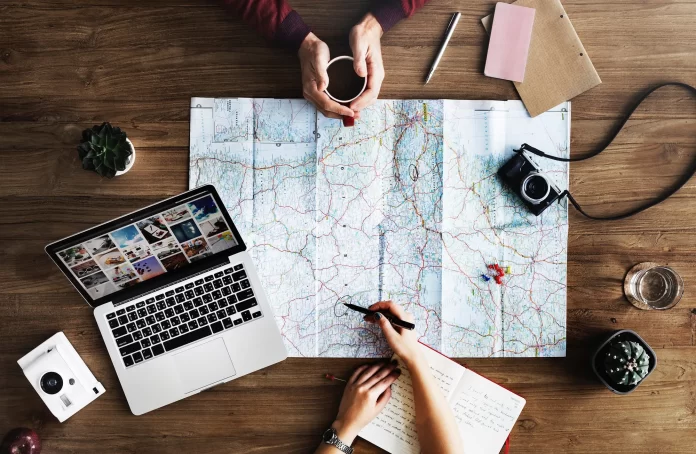As the pace of modern life accelerates, the way we approach vacations is evolving. Amid the convenience brought by digital transformations, a shadowy phenomenon emerges, namely ‘technostress’. The paradox of our digital age is that the same technology supposed to simplify our lives can actually complicate them, consequently altering our vacation habits.
Table of Contents
What’s Technostress?
The term ‘technostress’ was coined to encapsulate the pressure and anxiety caused by the constant barrage of digital information and the incessant demand to remain connected, even on vacation. Technostress comes with several faces: the overload of information, the necessity to quickly process and respond to that information, constant interruptions fragmenting our time and attention, hasty technological upgrades, and the omnipresence of cyber risks or privacy concerns. Even the hypothetical possibility of spending a vacation without even playing casino games at a site like Conquestador.com can be uncomfortable for some. However, a proper vacation is needed for everything. It’s no surprise that these factors can hamstring our relaxation during vacations, transforming our refuge of serenity into a smuggled workplace, underpinning an urgent need to rethink our vacation rituals.
The Impact of Technostress
The impact of technostress on vacations is making ripples across society, with numerous people seeking an antidote in the form of a ‘digital detox’. Digital detox retreats, often located in scenic, tranquil places, markedly impose restrictions on the use of digital devices, enabling holidaymakers to disconnect from their digital lives and reconnect with their physical surroundings. A reduced dependency on gadgets can permit the human brain to reboot and replenish, permitting a healthier balance between time spent online and offline. This is an effective countermeasure intended to diminish technostress during vacations.
Simultaneously, the rise of slow travel is a radical vacationing approach that reflects a growing desire to escape the pressures of the digital age. Slow travel emphasizes engaging more deeply with a destination, spending ample time exploring and immersing oneself in the local culture. This method is more harmonious with the human psyche and is inherently advantageous in escaping technostress. Intermittent internet access or digital use in these situations occurs as an auxiliary tool, instead of a pivotal part of the vacation experience.
Moreover, the idea of a ‘workation’ – a merger of work and vacation – is gaining momentum amongst digital nomads. These working professionals desire to break free from the traditional 9-to-5 structure without completely detaching from their work responsibilities. Equipped with a reliable internet connection, individuals can work remotely from any location, effectively making the entire world their office. While this can be an exciting prospect, it also possesses the danger of blurring the line between work and leisure, potentially exacerbating technostress. Accordingly, setting clear boundaries remains crucial.
As technostress continues to shape the vacation landscape, valuable psychological tools are emerging to aid individuals in cultivating a healthier relationship with technology. The practice of mindful digital device use, for example, encourages intentional rather than habitual engagement with technology, thereby reducing the chances of experiencing anxiety caused by excessive screen time. Keeping track of app usage statistics, scheduling regular digital breaks, and establishing designated ‘no-phone’ zones can all contribute to better time management and enhance our online well-being.
Furthermore, there is a growing trend of engineering technology to address the issue of technostress. Numerous digital platforms now incorporate features that prioritize digital wellbeing. Leading smartphone manufacturers have started including tools like Screen Time or Digital Wellbeing, which aim to create awareness among users about their online activities and usage duration. Similarly, meditation and mindfulness apps provide guidance on soothing exercises as part of their effort to alleviate stress and anxiety caused by excessive digital engagement.
Conclusion
As the exploration continues, it remains important to bear in mind that our goal is not to entirely eliminate technology from our lives. Instead, we strive to shape a healthier, balanced, and mindful relationship with it.
In the ever-evolving digital age, the way we approach vacations undergoes a significant transformation. From tranquil getaways in the countryside to adventurous remote work experiences in foreign cities, our notion of vacationing shifts profoundly. This change not only stems from the need to escape technostress but also reflects an embrace of a more adaptable and mindful relationship with technology and leisure. Ultimately, these developments allow us to regain the true purpose of vacations: finding solace and relief from the everyday pressures of life.








